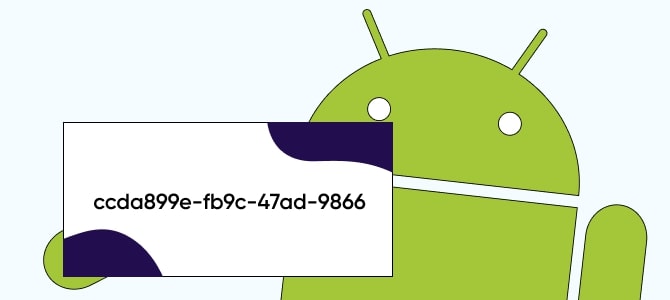
GAID (Google Advertising ID)

Google Advertising ID — aka GAID, aka Android ID, aka Android Advertising ID (AAID) — is a device unique identifier that enables app developers and marketers to measure campaign performance and user behavior across media sources, without compromising user privacy.
What is GAID?
Introduced in 2014, GAID is the equivalent of Apple’s Unique Device Identifier (UDID), designed to help advertisers track ad views, app activity, and conversions.
It provides users with an option to reset their identifier while still allowing their device identifier to be visible to media vendors and mobile measurement partners (MMPs).
Why is GAID important?
GAID plays, or at least used to play, an important role in the mobile advertising ecosystem. It helps advertisers to analyze app traffic and media sources attribution, including app installs and in-app purchases.
This allows marketers to assess the effectiveness of their campaigns, optimize them on the go, and segment their audience to be able to personalize and maximize their reach.
GAID also helps marketers fine-tune their campaigns and improve their ad efficiency, like engaging a group of users who have taken certain in-app actions, or shown interest in specific products or services.
How to find your GAID?
Although these steps may differ slightly depending on your device and operating system, here’s the gist of what you need to do to find your device’s GAID:
- Open the Settings app on your Android device
- Click on Google
- Select “Ads” under Services
- Your GAID number will be listed at the bottom of the screen
Note: the “Reset advertising ID” option offers users a brand new GAID number, but does not delete user-level data registered under their old GAID.
Privacy and the future of GAID
Currently, when an Android user opts out of receiving personalization ads on their device, their GAID remains available to app developers for limited purposes like analytics and fraud prevention.
On June 3rd 2021, however, Google announced that as of the end of 2021 — once Android 12 OS users opt out of personalized ads, their GAID will be made unavailable to app developers or marketers for any purpose, showing a string of zeros instead.
Google’s announcement is following suit after the launch of Apple’s ATT framework, which came into effect in April 2021.
Unlike the ATT format, however, Google will not require its users to opt-in to the use of their GAID, or prevent app developers from using other device identifiers once a user has opted out — as long as users have accepted the app’s privacy policy, and the app handles their data in accordance with Google’s Developer Distribution Agreement.
The Privacy Sandbox – Google’s alternative to GAID (what we know so far)

Replacing GAID, the Privacy Sandbox is an initiative rolled out by Google with a 2-year timeline — that aims to develop technologies that protect user’s privacy online.
It’s a collaborative industry-wide effort that aims to operate via multiple platforms (across the web and Android apps), and the proposed solutions are geared to limit tracking of users, while providing safer alternatives to existing technologies.
Key takeaways
- Google Advertising ID (aka GAID) is a device unique identifier that enables app developers and marketers to measure campaign performance and user behavior across media sources, without sharing user-level data with 3rd parties.
- GAID plays, or at least used to play, an important role in the mobile advertising ecosystem. It helps advertisers to analyze app traffic and media sources attribution, assess and optimize the effectiveness of their campaigns, and segment their audience for maximal impact.
- Google announced that as of the end of 2021, GAID will be made unavailable to app developers or marketers for any purpose once Android 12 OS users opt out of personalized ads. That said, alternatives to GAID are slated to be provided by Google in order to support analytics and fraud prevention.

